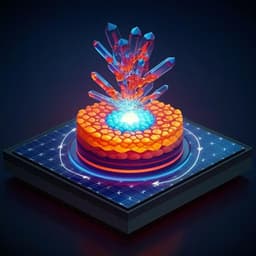
Engineering and Technology
Oxidation-resistant all-perovskite tandem solar cells in substrate configuration
Y. Wang, R. Lin, et al.
Discover a groundbreaking approach to all-perovskite tandem solar cells, reversing traditional processing orders for enhanced stability and efficiency. This innovative research by Yurui Wang and colleagues has achieved remarkable efficiencies, focusing on improving long-term performance in various environmental conditions.
~3 min • Beginner • English
Related Publications
Explore these studies to deepen your understanding of the subject.







